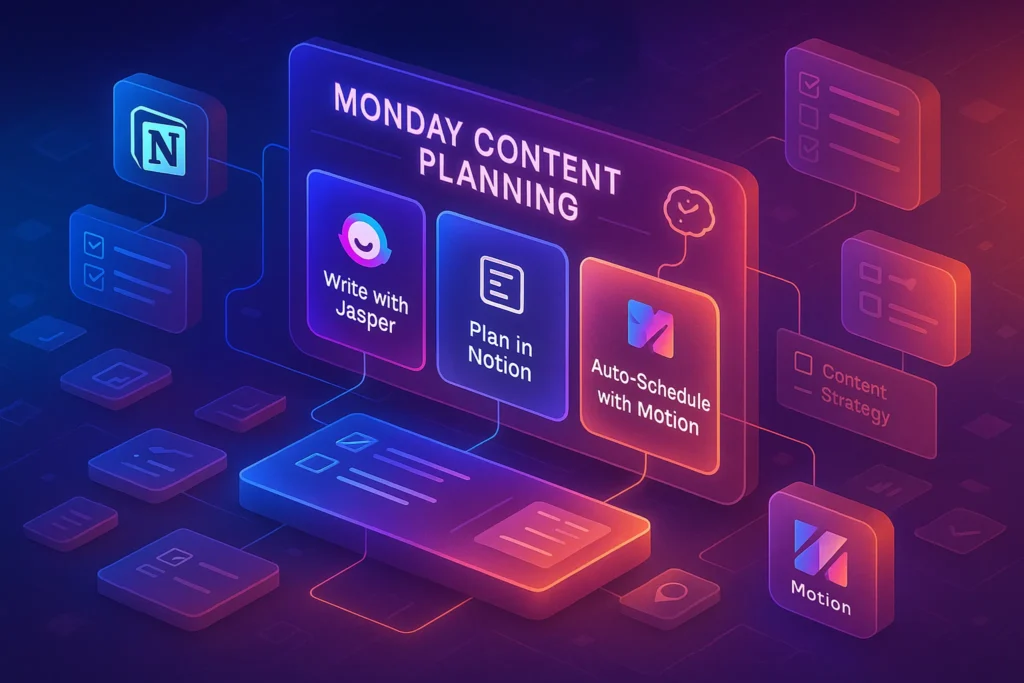🎯 Intro
How many times have you wasted hours trying to capture the perfect B-roll, or shelled out money for location shoots that stretched your budget thin? For creators, filmmakers, and YouTubers, stock footage has become the time-saving, cost-cutting secret weapon. Yet in 2025, the landscape is shifting. Subscription models, unlimited downloads, and bundled media libraries now make professional-grade footage affordable even for small creators.
In this NerdChips review, we’ll explore the best stock footage platforms in 2025, specifically through the lens of budget-conscious creators. Whether you’re producing YouTube content, TikTok ads, or branded campaigns, the right platform can deliver cinematic visuals without draining your wallet.
💡 Nerd Tip: Don’t think of stock footage as “filler.” Used strategically, it can elevate production value and free you to focus on storytelling.
🔍 Why Stock Footage Still Matters in 2025
Even with smartphones capable of 4K and affordable cameras everywhere, stock video remains essential. Why? Because not every creator can fly to New York for a skyline shot, or rent a helicopter for aerials. Stock platforms give instant access to footage libraries covering everything from nature landscapes to high-tech cityscapes.
For YouTubers, adding a few well-placed B-roll clips can transform pacing and engagement. For marketers, using polished visuals helps campaigns look professional without bloated production costs. And for bloggers branching into video (see our Best AI Writing Tools for Bloggers turned into video guides), stock assets help them produce mixed-media content quickly.
Speed is the other driver. With competition for attention, faster publishing cycles are everything. Stock video means you can drop in cinematic clips and ship projects days sooner. The cost-to-value ratio is simply too good to ignore.
📊 Criteria for Choosing the Right Platform
Not all stock platforms are created equal, and budget isn’t just about price—it’s about value. Here are the key factors to consider when evaluating platforms in 2025:
Resolution & Quality: With most creators now exporting in 4K, platforms that offer HD-only libraries feel dated. Future-proofing often means checking for 8K availability too.
Licensing Clarity: For commercial projects, ambiguous licensing is a nightmare. Look for “royalty-free” or clear commercial-use rights.
Diversity of Footage: A platform with thousands of clips isn’t enough if they all look staged. Authenticity matters, especially for creators producing content for social platforms.
Pricing Models: Subscriptions (unlimited downloads) vs. clip-by-clip pricing. Subscriptions work best if you use stock often; one-off clips make sense for occasional needs.
Extras & Bundled Assets: Many platforms now include music, sound effects, and templates alongside footage. Bundles can save money compared to piecemeal sourcing.
Search & AI Tools: In 2025, AI-powered search is a differentiator. Imagine typing “moody city at dusk” and getting relevant results instantly.
Integrations: Some platforms now connect directly to editing software, letting you drag and drop into Premiere or Final Cut. That workflow speed saves hours.
💡 Nerd Tip: Always test the search function. A clunky search engine can waste hours, no matter how great the library is.
🛠️ Platform Reviews: Strengths & Weaknesses
🌐 Envato Elements
Envato Elements is beloved for its all-in-one subscription model. For around $16/month, you get unlimited downloads across stock footage, photos, graphics, fonts, and templates. For creators juggling multiple media types, it’s unbeatable value.
The downside? Quality can vary. Some clips feel generic or low-tier, especially compared to premium-only platforms. Still, for YouTubers and small agencies, the sheer breadth makes it a workhorse.
💡 Nerd Tip: If you need volume—weekly videos, client projects, constant B-roll—Envato’s unlimited model pays for itself within one project.
🎵 Artlist
Artlist has expanded from music into video and multimedia. Their stock footage offering is known for cinematic quality, curated aesthetics, and tight licensing terms. A single subscription covers both music and video assets, which is ideal for creators producing video essays or branded shorts.
Pricing is higher than Envato, but you’re paying for quality and consistency. If you want stock that doesn’t look like stock, Artlist’s library stands out.
💡 Nerd Tip: Artlist is perfect for creators building premium content—like documentary-style YouTube channels or agency ads.
🎞 Motion Array
Motion Array targets video editors directly. Beyond footage, it offers templates for Premiere, After Effects, and Final Cut, plus transitions, LUTs, and sound effects. For under $30/month, it’s a Swiss-army knife for editors on a budget.
Limitations? The footage library is smaller than Pond5 or Envato. Niche topics may be missing, but the bundled editing tools make up for it.
💡 Nerd Tip: Motion Array is a productivity boost—pair it with a Portable Monitor setup for on-the-go editing efficiency.
🏞 Pond5
Pond5 is one of the oldest and largest stock video libraries. With millions of clips, its strength is variety. Need a niche scene, like underwater coral in 8K? Pond5 probably has it.
Pricing is where Pond5 can sting. Premium clips may cost $50–$200 each. For occasional use or high-end projects, it’s worth it. But for budget creators, it’s best as a supplement to a cheaper subscription elsewhere.
💡 Nerd Tip: Use Pond5 for hard-to-find, high-quality niche shots. Combine it with Envato or Motion Array for everyday needs.
🎥 Free Platforms (Pexels, Pixabay, Videvo, Mixkit)
For zero-cost creators, free stock sites are a lifesaver. Platforms like Pexels and Pixabay have expanded their video offerings, and Videvo adds a mix of free and premium clips. Quality has improved, but limitations remain: lower diversity, inconsistent quality, and licensing nuances.
They’re best used as a supplement to paid libraries, not a replacement. Overuse of free stock risks making your content look generic if everyone’s recycling the same clips.
💡 Nerd Tip: Always double-check licensing on free sites. Some clips are only safe for editorial use, not commercial campaigns.
🚀 Action Guide for Creators on a Budget
Step one is clarifying your project needs. Are you producing weekly YouTube videos? Then unlimited subscriptions make sense. If you’re editing one commercial project per month, clip-by-clip pricing may be cheaper.
Step two: test libraries. Download a few preview clips, check resolution, and see how they fit in your editing pipeline. A good stock provider saves time as much as money.
Step three: integrate strategically. Don’t drop stock in as filler—blend it with your original footage, adjust color grading, and add text overlays. The goal is seamless integration.
Step four: archive your downloads. Building your own mini-library saves time on repeat projects. Some creators even tag downloaded clips in Notion or Airtable to keep track of usage rights.
Finally, think long-term. For anyone producing content consistently, an annual unlimited plan almost always beats piecemeal purchases.
⚠️ Challenges & Solutions
Budget creators face a few recurring pain points with stock footage. Quality is inconsistent, especially on free platforms. Solution: combine free clips with a mid-tier subscription to balance variety and quality.
Cost is another hurdle for 4K or 8K footage. High-end clips can run into hundreds of dollars. Solution: limit ultra-high-resolution stock to projects where it truly matters—ads, films, or premium branded videos.
Licensing confusion is perhaps the biggest risk. Some clips look free but require attribution or prohibit commercial use. Solution: always check the license before finalizing edits.
Finally, overuse is real. If too many creators rely on the same stock, audiences may notice. A quick fix? Add light edits, filters, or speed adjustments to make stock feel custom.
💡 Nerd Tip: Treat stock footage like raw ingredients. The best meals come from how you cook, not what you buy.
⚡ Stretch Your Budget, Upgrade Your Visuals
Platforms like Envato, Motion Array, and Artlist let creators access high-quality stock for a fraction of traditional costs. Pair them with free sites for maximum savings.
📊 Comparison Layer: Pricing & Value Breakdown
When choosing a stock platform, creators often weigh two things: cost and value. Here’s how the 2025 landscape stacks up:
-
Envato Elements: Around $16–20/month for unlimited downloads. Incredible value for volume creators, but quality can be hit-or-miss.
-
Artlist: $30–40/month. Higher cost, but superior curation and bundled music libraries. Ideal for polished content.
-
Motion Array: $25–30/month. Balanced option with templates, LUTs, and sound effects included. The all-in-one tool for editors.
-
Pond5: Pay-per-clip model, usually $50–$200 per clip. Best for rare or ultra-high-quality shots, not everyday use.
-
Free Sites (Pexels, Pixabay, Mixkit): Zero cost, but limited variety and inconsistent quality. Best used as a supplement.
💡 Nerd Tip: If you’re producing at least 2–3 videos per month, unlimited subscriptions (Envato or Motion Array) almost always end up cheaper than piecemeal clip purchases.
🎞 Integration with Editing Workflows
Beyond cost, workflow integration is a game-changer. In 2025, many platforms now offer plugins or API connections to editing suites.
Motion Array’s integration with Premiere Pro and After Effects means you can drag-and-drop assets without leaving your editing timeline. Artlist offers direct download sync to Final Cut libraries, saving manual import steps. Envato Elements, while not as tightly integrated, provides downloadable project files that open directly in After Effects or Premiere templates.
For creators working on the move, integration matters as much as cost. A freelancer editing on a Portable Monitor during travel needs stock platforms that streamline file handling instead of cluttering local storage.
💡 Nerd Tip: Check whether your chosen stock site integrates with your editing tool. The hours saved in imports and file management often outweigh slight price differences.
👤 Creator Personas & Scenarios
Different creators have different needs, and the best platform isn’t one-size-fits-all.
-
The Budget YouTuber: Produces two videos per week, uses stock clips for intros, transitions, and scene-setting. Envato Elements is their best friend, giving volume at low cost.
-
The Indie Filmmaker: Needs cinematic, unique footage for festival submissions. Artlist or Pond5 are ideal, offering high-end visuals that won’t look overused.
-
The Freelance Marketer: Juggles multiple client projects. They need fast turnaround, templates, and ready-to-go assets. Motion Array provides both footage and editing add-ons.
-
The Blogger-Turned-Vlogger: Expands written content into video (see Best AI Writing Tools for Bloggers evolving into vlogs). Free platforms like Pexels give them a low-risk entry point before investing.
💡 Nerd Tip: Identify your persona before subscribing. If you’re a YouTuber who uploads weekly, unlimited subscriptions are gold. If you’re a filmmaker, quality outweighs quantity.
🤖 AI-Powered Search & Tagging
One of the biggest shifts in 2025 is AI-driven search. No longer are you stuck scrolling through hundreds of irrelevant clips. Modern stock platforms allow natural language search—type “moody city at dusk with rain reflections” and get precise results.
Some even support visual search, where you upload a reference image and the AI finds footage with a similar look and feel. For time-pressed creators, this is revolutionary.
Envato and Artlist both rolled out AI-based tagging in 2024, cutting search time in half. Motion Array is experimenting with auto-generated categories like “social media ad ready” or “cinematic b-roll.”
💡 Nerd Tip: Test AI search with a complex phrase. If a platform gives you accurate, creative results, it’s worth the subscription. Poor search wastes both time and money.
🔮 Future Outlook: Stock Footage Beyond 2025
The next frontier of stock video is already emerging. Three trends are worth watching:
-
AI-Generated Stock Video: Instead of libraries shot by humans, platforms are starting to offer AI-rendered stock. Imagine typing a prompt like “sunset over futuristic city” and receiving custom clips in minutes.
-
Dynamic Stock: Personalized stock that adapts—same clip but different branding colors, text overlays, or aspect ratios generated on demand.
-
Smart Licensing Models: Instead of flat subscriptions, we may see usage-based pricing. Micro-creators could pay less, while agencies handling large campaigns would pay proportionally more.
For creators, this means more choice—and less excuse to stick with generic footage. As AI merges with stock platforms, we’ll likely see the boundary between pre-shot and custom content blur.
💡 Nerd Tip: Keep an eye on hybrid platforms that mix traditional libraries with AI video generators. They’ll define the next wave of content creation.
Want More Smart Content Tips?
Join our free newsletter for weekly insights on video editing, AI tools, and content strategies—crafted to help creators on a budget scale smarter.
100% privacy. Only useful strategies, no spam. Delivered by NerdChips.
🧠 Nerd Verdict
For budget-conscious creators, stock footage is no longer a luxury—it’s a necessity. Platforms like Envato Elements and Motion Array democratize access, while Pond5 and Artlist fill in premium needs. Free platforms remain useful supplements, though licensing and quality require vigilance.
The smartest approach? Mix and match. Pair a budget subscription with occasional premium purchases, and sprinkle in free clips for variety. This balanced strategy ensures your content looks polished without breaking the bank.
At NerdChips, we believe creators should spend more time crafting stories and less time worrying about budgets. Stock footage in 2025 makes that possible.
❓ FAQ: Nerds Ask, We Answer
💬 Would You Bite?
Would you invest in an unlimited subscription for creative freedom, or stick with free stock libraries and pay per clip when needed?
Crafted by NerdChips for creators who want Hollywood visuals on an indie budget.



